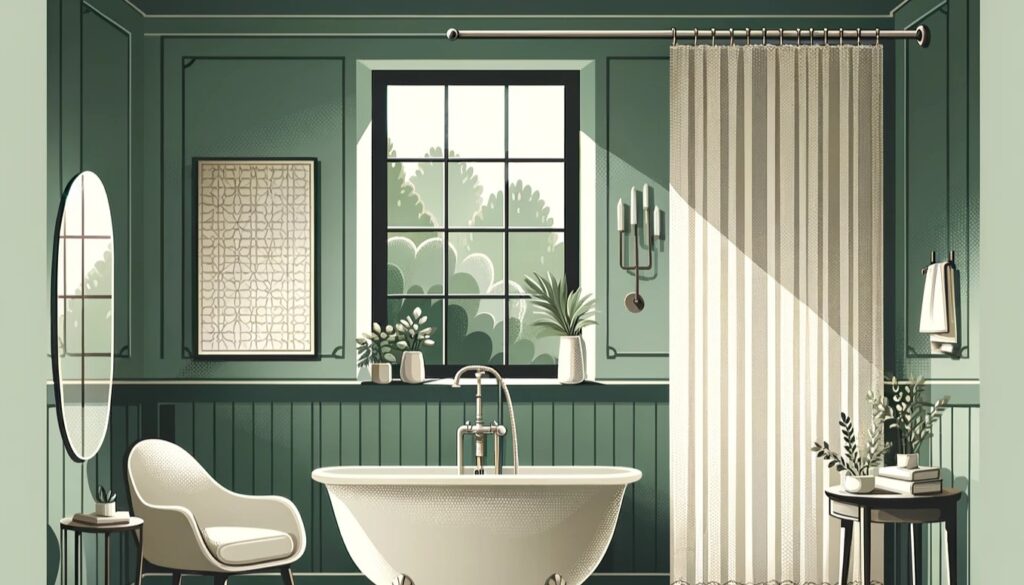Table of Contents
- Introduction
- Quick Read: DIY Shoe Rack Overview
- Understanding Your Space and Needs
- Design Ideas and Inspiration
- Introduction
- Quick Read: Standard Shower Curtain Size
- Why Size Matters: A Closer Look at Shower Curtains and Liners
- Measuring Up: How to Choose the Right Size Shower Curtain for Your Bathroom
- Beyond the Basics: Tips for Choosing the Perfect Shower Curtain
- Conclusion
Introduction
Welcome to our cozy corner of creativity and practicality, where today we’re tackling a common household dilemma: shoe organization. If you’ve ever found yourself tripping over a scattered collection of shoes or struggling to find a pair in a cluttered closet, you’re not alone. The good news is, with a little DIY magic, you can create a stylish and functional shoe rack that not only organizes your shoes but also adds a personal touch to your home. And the best part? You don’t need to be a DIY expert to pull it off. This post is designed with complete novices in mind, guiding you through the process of building a budget-friendly, space-saving shoe rack that will make your life a little easier and your closet a lot tidier.
Quick Read: DIY Shoe Rack Overview
Creating a DIY shoe rack is not just about saving space; it’s about taking control of your living area, injecting a bit of creativity, and enjoying the satisfaction that comes with building something with your own hands. Here’s a quick guide to get you started:
Materials You’ll Need:
- Wood (preferably pine or cedar for their durability and ease of work)
- Screws or nails
- Wood glue (optional for extra stability)
- Sandpaper
- Paint or wood stain (optional for finishing)
Tools Required:
- Saw (hand saw or power saw)
- Drill
- Screwdriver
- Measuring tape
- Level
Simple Steps to Your Shoe Rack:
- Measure Your Space: Decide where your shoe rack will go and how large it can be.
- Design Your Rack: Sketch a simple design, considering how many pairs of shoes you need to store. Opt for vertical shelves to save floor space.
- Cut Your Wood: Cut the wood according to your measurements. Remember, safety first—wear protective gear.
- Assemble the Rack: Start by building the frame, then add the shelves. Use screws or nails and wood glue for a secure build.
- Finish It Up: Sand any rough edges for a smooth finish. Paint or stain your rack to match your decor, or leave it natural for a rustic look.
- Organize Your Shoes: Once dry, place your rack in its designated spot and organize your shoes by type or frequency of use.
And voila! You’ve created not just a piece of furniture, but a solution to the ever-present shoe dilemma. Ready to dive deeper into each step? Keep reading as we break down the process, offering tips and tricks to make your DIY shoe rack a project you’ll be proud of.
Understanding Your Space and Needs
Before you start cutting wood or drilling holes, take a moment to assess your needs and the space you have available. Measure the area in your closet—or wherever you plan to place the shoe rack—carefully. Consider not just the width and height but also the depth. Think about your shoe collection: How many pairs do you need to store? Do you have boots or high-tops that might require more height between shelves? Planning is crucial; it ensures that your shoe rack won’t just fit in your space but will serve its purpose effectively.
Design Ideas and Inspiration
Designing your shoe rack can be as simple or as elaborate as you like. Here are a few ideas to get you started:
- Vertical Shoe Rack: Perfect for tight spaces. Its tall, slim profile takes up minimal floor space.
- Ladder-Style Rack: Leaning against the wall, this design adds a decorative touch while keeping shoes off the ground.
- Under-Bench Storage: If you have a bit more space, a bench with shoe storage underneath offers a practical and aesthetic solution.
Remember, the design should not only reflect your personal style but also address your storage needs. Don’t be afraid to get creative!
Introduction
Ever found yourself pondering the mysteries of the universe, only to realize you’re actually just contemplating why your shower curtain seems like a misfit? It’s a humorous yet common scenario that highlights a crucial aspect of bathroom design: finding the right shower curtain size. Not only is this essential for keeping water where it belongs, but it also plays a significant role in the overall ambiance of your bathroom. In the spirit of avoiding the all-too-common bathroom faux pas of a too-short or too-wide curtain, let’s embark on a journey to uncover the perfect fit for your shower space. Prepare to turn your bathroom from a splash zone into a stylish sanctuary.
Quick Read: Standard Shower Curtain Size
In a rush? Here’s the quick lowdown on standard shower curtain sizes: The go-to measurement for a shower curtain is typically 72 inches (183 cm) wide by 72 inches (183 cm) long. This size is akin to the universal language of shower curtains, fitting the majority of standard tubs and shower spaces with ease. However, life isn’t one-size-fits-all, and neither are shower spaces. For those with shower stalls, a 54×78 inch curtain might be your match, while extra-tall showers may call for a 72×84 inch curtain. The moral of the story? While 72×72 inches is a safe bet for many, always arm yourself with a tape measure before making a purchase. It’s the simplest way to ensure your shower curtain fulfills its destiny without leaving you high and dry (or, in this case, the opposite).
Why Size Matters: A Closer Look at Shower Curtains and Liners

Ever experienced the phenomenon of a bathroom flood despite a closed shower curtain? Or perhaps you’ve waged battles against a curtain that seems possessed by the spirit of a clingy cat? These bathroom blunders often boil down to one thing: size mismatch. The right shower curtain acts as a functional piece of art, perfectly balancing form and function. It’s not just about covering the tub; it’s about enhancing the room’s aesthetics while keeping water at bay.
Picture an expert in the field, “Alex Deco,” who eloquently states, “The magic of a shower curtain lies not just in its design but in its dimensions. A well-sized curtain is like a well-tailored suit—it just fits.” This wisdom underscores the significance of not only choosing a visually appealing shower curtain but also ensuring its dimensions are spot-on for your space.
Measuring Up: How to Choose the Right Size Shower Curtain for Your Bathroom
Finding the ideal shower curtain is akin to embarking on a mini treasure hunt, with your tape measure as the map. The quest begins with two critical measurements: width and height.

- Width: Start by measuring the length of your shower rod. Opt for a curtain that’s about 10 to 12 inches wider than this measurement to allow for graceful folds rather than a flat appearance. Think of it as ensuring your curtain has the room to perform a full, theatrical bow.
- Height: Measure from the rod to your desired endpoint. Aiming for a few inches below the top of the tub can prevent water escapades while avoiding a curtain that sweeps the floor. For those with loftier setups, “long” options are your friend, ensuring elegance isn’t sacrificed for coverage.
Pro Tip: Keep in mind the height of shower rings or hooks when tallying up your measurements, as they play a pivotal role in the final hang of the curtain.
Beyond the Basics: Tips for Choosing the Perfect Shower Curtain
With measurements in hand, the next step is diving into the world of materials, designs, and unique features. Your shower curtain isn’t just a functional item; it’s a centerpiece that reflects your style.
- Materials: The choice here can set the tone for your bathroom. Luxurious linen for a touch of elegance? Waterproof polyester for practicality? The fabric of your curtain can dramatically affect both its look and its performance.
- Design: This is where personality shines. Whether you’re drawn to bold patterns, serene landscapes, or chic solids, your shower curtain should complement the overall vibe of your bathroom. It’s an opportunity to inject a bit of your essence into the space.
- Features: Consider elements like weighted hems to combat the infamous curtain cling or reinforced grommets for longevity. And for the truly savvy, curtains with pockets offer a convenient spot for those shower necessities.
Returning to our esteemed “expert,” Alex Deco jests, “Choosing a curtain without pockets is akin to using a flip phone in the smartphone era. Sure, it does the job, but think of what you’re missing!”
Conclusion
The journey to finding the perfect shower curtain size and style might seem like a trivial detail, but it’s these small decisions that contribute to the overall harmony and functionality of your home. Armed with the right measurements and a dash of personal flair, your shower curtain can elevate from a mere functional necessity to a bold statement piece.
So, as you embark on your next shower curtain adventure, keep the sage advice of our fictional guru, Alex Deco, in mind: “Measure twice, purchase once, and never underestimate the power of a little fun in functional design.” After all, your shower curtain is not just a barrier to water—it’s a gateway to expressing your personal style.
